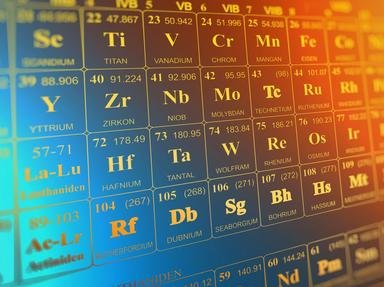
Triple Digit Elements Trivia Quiz
When I was a chemistry student in the 1980s, there were only 101 confirmed and named elements. In 2016, the 118th was named. Can you identify those numbered 100 or above?
A collection quiz
by MariaVerde.
Estimated time: 3 mins.
- Home
- »
- Quizzes
- »
- Science Trivia
- »
- Chemistry
- »
- Periodic Table